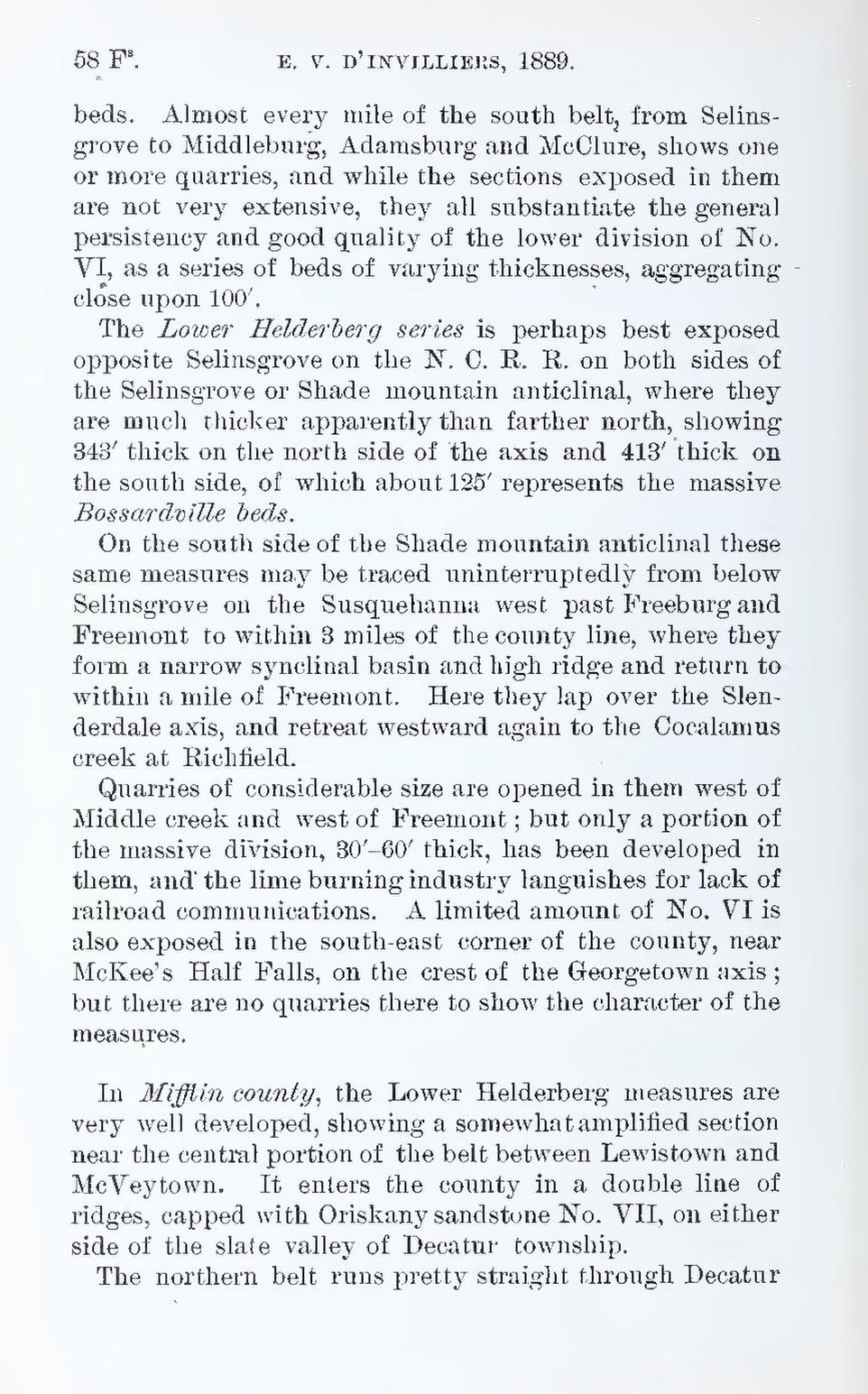beds. Almost every mile of the south belt, from Selinsgrove to Middleburg, Adamsburg and McClure, shows one or more quarries, and while the sections exposed in them are not very extensive, they all substantiate the general persistency and good quality of the lower division of No. VI, as a series of beds of varying thicknesses, aggregating close upon 100′.
The Lower Helderberg series is perhaps best exposed opposite Selinsgrove on the N. C. R. R. on both sides of the Selinsgrove or Shade mountain anticlinal, where they are much thicker apparently than farther north, showing 343′ thick on the north side of the axis and 413′ thick on the south side, of which about 125′ represents the massive Bossardville beds.
On the south side of the Shade mountain anticlinal these same measures may be traced uninterruptedly from below Selinsgrove on the Susquehanna west past Freeburg and Freemont to within 3 miles of the county line, where they form a narrow synclinal basin and high ridge and return to within a mile of Freemont. Here they lap over the Slenderdale axis, and retreat westward again to the Cocalamus creek at Richfield.
Quarries of considerable size are opened in them west of Middle creek and west of Freemont; but only a portion of the massive division, 30′—60′ thick, has been developed in them, and the lime burning industry languishes for lack of railroad communications. A limited amount of No. VI is also exposed in the south-east corner of the county, near McKee’s Half Falls, on the crest of the Georgetown axis; but there are no quarries there to show the character of the measures.
In Mifflin county, the Lower Helderberg measures are very well developed, showing a somewhat amplified section near the central portion of the belt between Lewistown and McVeytown. It enters the county in a double line of ridges, capped with Oriskany sandstone No. VII, on either side of the slate valley of Decatur township.
The northern belt runs pretty straight through Decatur
